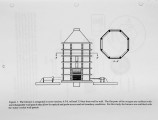| OCR Text |
Show Introduction The 1990 amendments to the Clean Air Act set forth a schedule specifying that regulations for air toxic emissions from refinery process heaters will be promulgated by the tum of the century. In order to better understand the origin and fate of air toxics in refinery process heaters, a comprehensive research program was undertaken by Sandia National Laboratories, Lawrence Livennore National Laboratory, the University of California, Los Angeles, and Stanford University, with oversight and sponsorship by Amoco, Chevron, the Gas Research Institute, Mobil, Shell, SoCal Gas, Texaco, and the Department of Energy (Seebold, 1994). To this end, studies of two, 2 MMBtulh refinery process heater burners, a conventional burner (John Zink PDA-12) and a low NOx burner (John Zink PSMR-I0), were undertaken at the Burner Engineering Research Laboratory (BERL) in the Combustion Research Facility at Sandia National Laboratories in Livennore, California. Detailed fluid mechanic measurements and modeling calculations were conducted on the burners to try to identify where air toxics are created and destroyed. This paper describes some of the experimental and modeling results on mixing from the PDA-12 burner. One of the most important parameters for well-controlled combustion in burners is mixing. In the PDA burner this is achieved by splitting the fuel among several individual high-velocity jets at varying orientations with respect to the air flow. Investigation of the PDA burner using point temperature, velocity, and species measurements and Mie scattering imaging revealed that most of the mixing takes place inside the quarl. These observations provided support for using the Broadwell modeling approach (Broadwell and Breidenthal, 1982) for this burner. Lutz and Broadwell (1994) devised a Two-Stage Lagrangian (TSL) model using full chemical kinetics and simplified fluid mechanics which was applied to the PDA. Two experimental investigations were undertaken to support this modeling work. First, because the prediction of pollutant levels in the TSL model is dependent on estimating the fuel jet mixing in the quarl region, measurements to estimate the air entrainment rate by one of the fuel jets inside the quarl were taken. Second, the residence time distribution in the furnace was measured. This infonnation was then used as input parameters for the TSL model. Facility Description The Burner Engineering Research Laboratory, described in detail by Fornaciari et al. (1994), is a facility where state-of-the-art conventional and laser-based diagnostics are used to study combustion in industrial scale burners. The octagonal furnace enclosure is shown in Figure 1. It is equipped with four types of wall panels. The first two, refractory lined and stainless steel water-cooled outfit the majority of the furnace and are used to set the thennal boundary conditions. The other two panel types have either large windows for optical access or narrow ports for in-furnace sampling probes. The furnace can accommodate burners with firing rates from 100 kW to 600 kW. In addition to the laser-based diagnostics available at BERL, which include planar Mie scattering, laser Doppler velocimetry and laser-induced fluorescence, the laboratory is equipped with conventional diagnostic capabilities including continuous emissions monitoring, suction pyrometry, radiometry and in-furnace gas sampling. 2 |

































